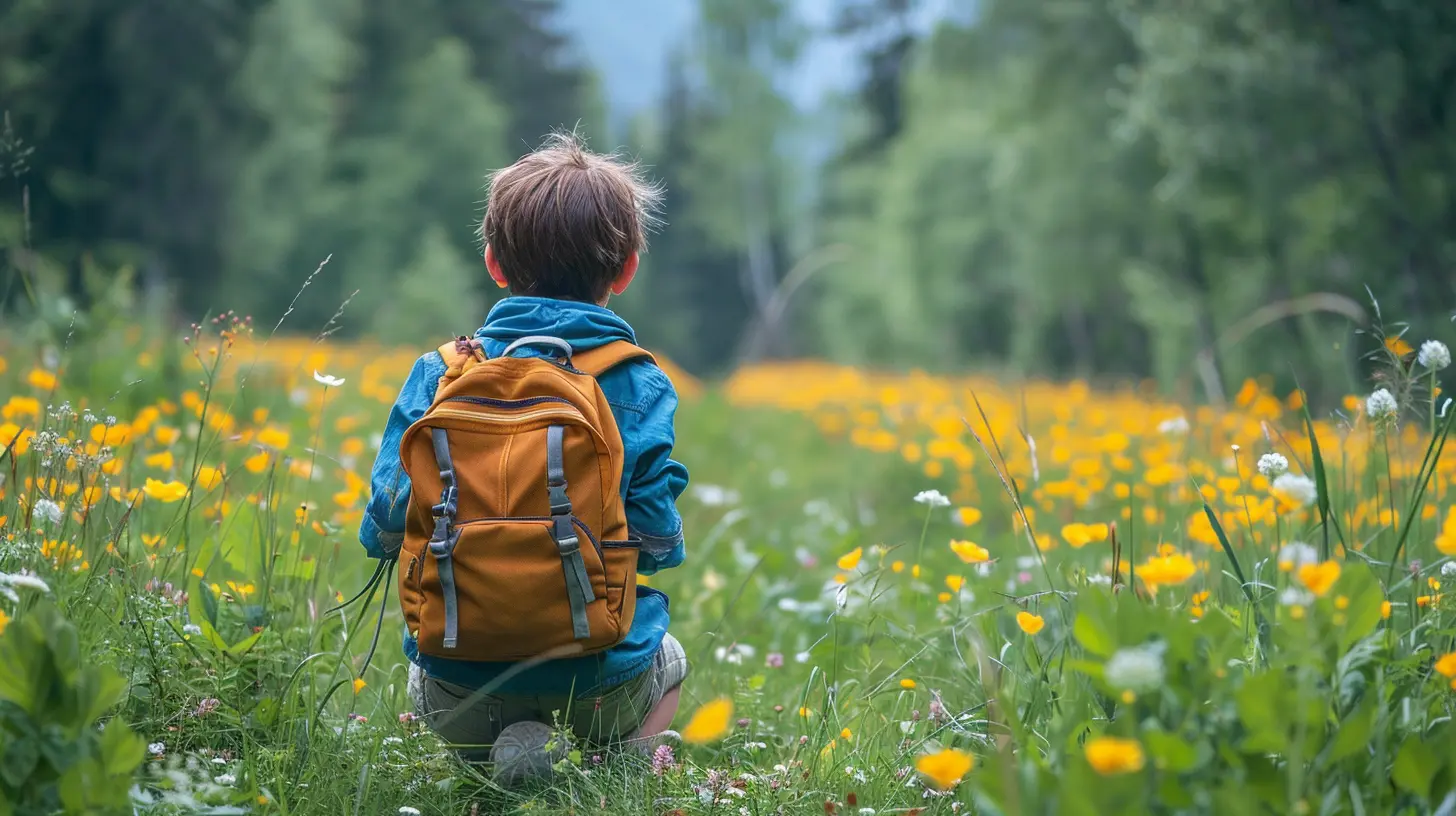16 October 2025
In today’s fast-paced world, students are bombarded with information, deadlines, and expectations. Anxiety and stress are rising among school-aged children, making it crucial for educators to introduce mindfulness into the classroom. But how can we make mindfulness enjoyable and effective for kids? The answer lies in nature.
Nature provides a calming, immersive experience that naturally fosters mindfulness. By incorporating the outdoors into education, we can help students develop self-awareness, emotional regulation, and a deeper connection with their surroundings. Let's dive into how schools can use nature to teach mindfulness in engaging and meaningful ways.

Why Mindfulness Matters in Schools
Before we talk about nature, let's understand why mindfulness is essential. Mindfulness is the practice of being present in the moment without judgment. It helps students:- Reduce stress and anxiety
- Improve focus and concentration
- Enhance emotional well-being
- Develop empathy and compassion
Studies show that mindfulness improves academic performance and social relationships, making it a powerful tool for schools. But instead of teaching mindfulness through abstract concepts, nature provides a hands-on experience that resonates deeply with young minds.

How Nature Enhances Mindfulness
Being in nature naturally encourages mindfulness. When students step outside, their senses awaken—they feel the breeze, hear birds chirping, and notice the movement of the trees. This automatic shift in awareness helps them focus on the present moment without even trying.Nature also teaches patience and observation. Watching a butterfly land on a flower or listening to the rustling leaves requires stillness and presence, key components of mindfulness. Let’s explore some practical ways schools can integrate nature into mindfulness practices.

Practical Ways to Use Nature for Mindfulness in Schools
1. Outdoor Breathing Exercises
Deep breathing is a fundamental mindfulness technique. Practicing it in nature enhances the experience. Try this simple exercise:- Take students outside to a quiet area.
- Ask them to close their eyes and focus on their breath.
- Guide them to inhale deeply through their nose and exhale slowly through their mouth.
- After a few breaths, encourage them to notice the sounds, smells, and sensations around them.
This exercise grounds students in the present moment and reduces stress instantly. The fresh air also improves lung function and energy levels.
2. Mindful Nature Walks
Walking can be a mindfulness practice if done with intention. Instead of rushing from point A to B, encourage students to walk slowly and deliberately, paying attention to their surroundings.Here’s how to make a nature walk mindful:
- Ask students to walk without talking for a few minutes.
- Encourage them to notice the colors, shapes, and movements around them.
- Have them focus on their footsteps—how does the earth feel beneath their feet?
- Afterward, discuss their observations and how they felt during the walk.
This helps students develop awareness, patience, and appreciation for nature’s details.
3. Sensory Awareness Activities
Nature is a playground for the senses, making it perfect for sensory mindfulness practices. Try these engaging activities:- Touch: Have students pick up leaves, stones, or flowers and describe how they feel.
- Sound: Ask them to close their eyes and list all the sounds they hear.
- Smell: Encourage them to take deep breaths and notice different scents in the air.
- Sight: Challenge them to find five things they’ve never noticed before.
These activities sharpen focus and help students anchor themselves in the present moment.
4. Nature Journaling
Writing is a fantastic way to reflect on mindfulness experiences. Nature journaling allows students to document their thoughts, emotions, and observations.Here’s how to make it effective:
- Have students find a quiet outdoor spot.
- Ask them to write about what they see, hear, and feel.
- Encourage them to sketch their surroundings or describe how nature makes them feel.
- Provide prompts like “What does the wind remind you of?” or “Describe the colors of the sky.”
This practice enhances creativity while reinforcing mindfulness.
5. Gardening for Mindfulness
Gardening is a hands-on way to teach mindfulness. Planting seeds, watering plants, and watching them grow requires patience, care, and attention—all essential mindfulness skills.Encourage students to:
- Observe the soil, plants, and insects closely.
- Feel the texture of leaves and flowers.
- Notice how the plants change over time.
- Reflect on how nurturing plants can be similar to nurturing their own well-being.
Gardening fosters a deep sense of connection with nature and instills a sense of responsibility.
6. Cloud Watching & Stargazing
One of the simplest yet most effective mindfulness techniques is lying on the grass and watching the sky.- During the day, have students observe the movement of clouds. Ask them to describe the shapes and changes they see.
- At night, if possible, stargazing can be a powerful way to induce a sense of wonder and presence.
This practice encourages stillness and appreciation of the world beyond daily worries.
7. Animal Observations
Animals live in the moment, making them great mindfulness teachers. Observing birds, butterflies, or even ants can be a peaceful and grounding exercise.- Have students quietly watch an animal and note its movements.
- Ask them to reflect on how animals remain present without stress or distractions.
- Discuss how humans can learn to embrace the present similarly.
This activity teaches patience and deepens the understanding of mindfulness in a natural way.

The Long-Term Benefits of Nature-Based Mindfulness
Regular exposure to nature-based mindfulness exercises can have profound effects on students. It helps them:- Develop resilience and emotional stability.
- Improve attention span and academic performance.
- Foster environmental awareness and appreciation.
- Strengthen social interactions and teamwork.
When children connect with nature, they develop a sense of responsibility toward the environment. They also learn to manage stress better, which is essential for their overall well-being.
How Schools Can Implement Nature-Based Mindfulness
Schools can integrate nature into mindfulness practices without major changes. Here are some easy ways to start:- Create outdoor classrooms: Set up benches or mats in a garden for mindfulness activities.
- Schedule outdoor breaks: Allow students to spend a few minutes outside between classes.
- Encourage teachers to lead nature-based mindfulness sessions: Training teachers to incorporate outdoor mindfulness can make a big difference.
- Incorporate mindfulness into subjects: Science, art, and literature can all include nature-based mindfulness exercises.
With small steps, educators can create a learning environment that nurtures mindfulness and well-being.
Final Thoughts
Teaching mindfulness in schools doesn’t have to be limited to silent meditation or breathing exercises in a classroom. Nature offers a rich, engaging, and calming way to develop mindfulness skills effortlessly.By stepping outside, listening to the rustling leaves, feeling the warmth of the sun, or simply watching an ant carry a leaf, students can learn to slow down, regulate their emotions, and truly be present.
So, why not take the class outdoors? A mindful moment in nature today can lead to a lifetime of resilience, focus, and inner peace for students.








Kinsley Dorsey
What a refreshing approach! Integrating nature into mindfulness not only enhances learning but also fosters peace and connection among students. Love this idea for schools! 🌿😊
November 6, 2025 at 1:31 PM